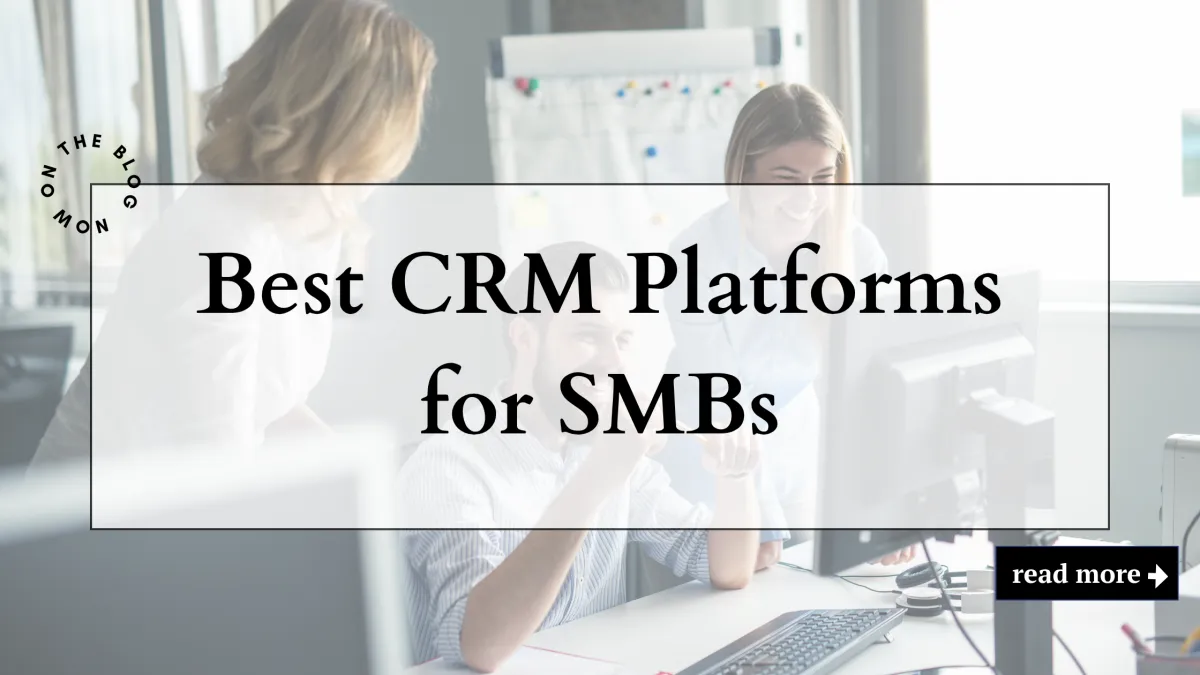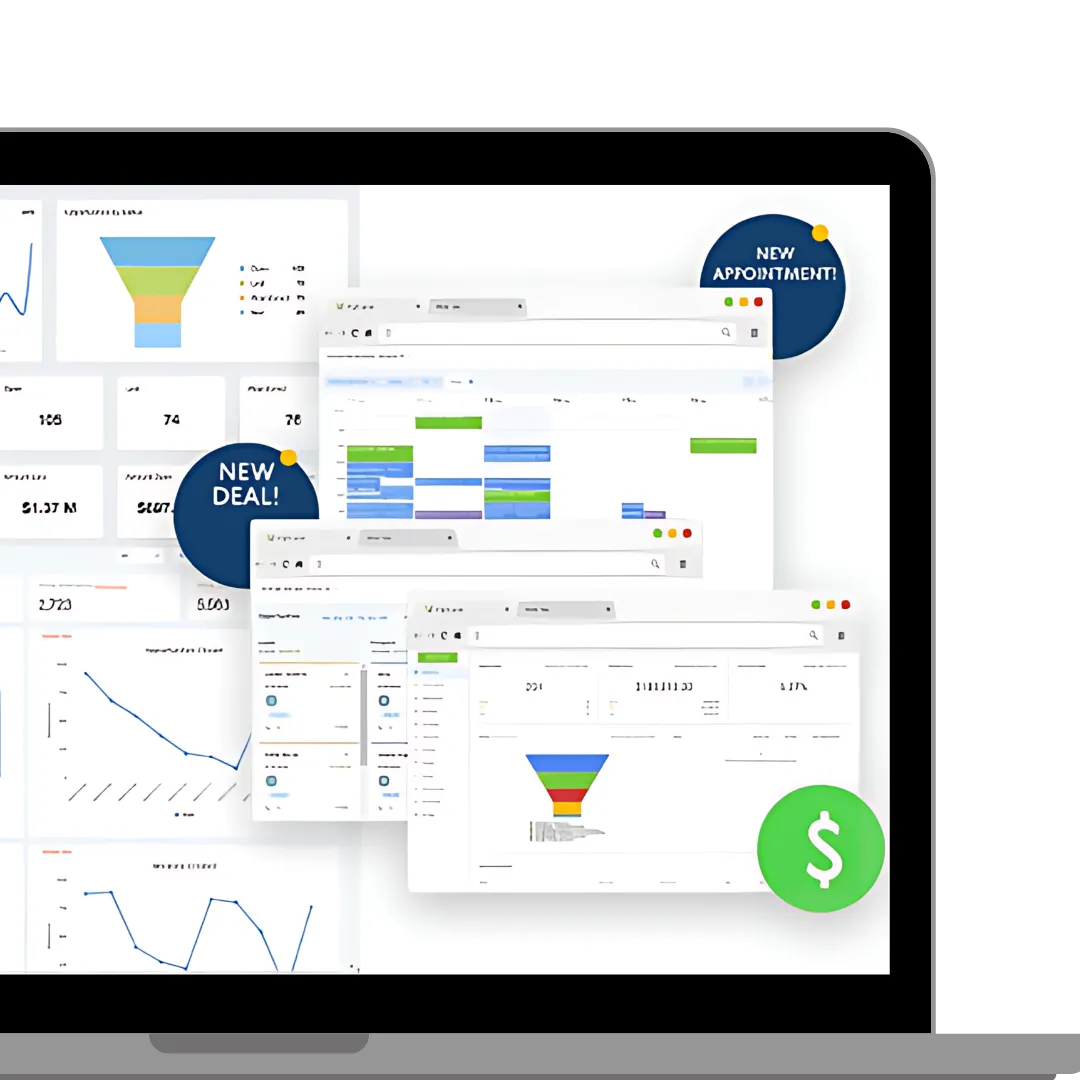
Best CRM Platforms for SMBs: GoHighLevel vs HubSpot vs Zoho vs Pipedrive
Best CRM Platforms for SMBs: GoHighLevel vs HubSpot vs Zoho vs Pipedrive:
Customer Relationship Management (CRM) systems are essential for growing small and medium businesses – they keep all contacts, communication history, and sales data in one place. A good CRM acts as a single source of truth for your team, so “everyone is on the same page” with every customertech.leadmagno.com. By automating follow-ups and tracking every interaction, CRMs help ensure no lead falls through the cracks. In fact, companies that adopt a CRM typically see a ~30% increase in sales and much faster deal cyclestech.leadmagno.com. With dozens of options available, choosing the right CRM comes down to your needs (and budget) as an SMB.
When comparing CRMs for small businesses, key criteria include ease of use, sensible automation and pricing. For example, a recent roundup notes that the top SMB-friendly CRMs “balance power, simplicity and price”gohighlevel.com. Important factors are an intuitive interface (so you don’t need weeks of training), and automation tools that fit your workflow (e.g. simple email follow-ups, lead scoring, scheduling)gohighlevel.com. Multi-channel communication is also a plus: ideally the CRM brings email, SMS, social DMs and web chat into one inboxgohighlevel.com. Lastly, consider growth – choose a CRM that has a free or low-cost entry plan but can scale (more users, contacts, automation) as your business growsgohighlevel.com.
GoHighLevel CRM
GoHighLevel is an all-in-one platform originally built for agencies but now also popular with SMBs that want to combine marketing and sales in one place. It bundles CRM, marketing automation (funnels, emails, campaigns), two-way SMS/text, online scheduling, review management and even AI agents into a single dashboardgohighlevel.com. In other words, you can capture a lead, nurture them via email/SMS, and close them with an integrated pipeline – without switching tools. Setup is relatively quick and support is geared toward non-technical usersgohighlevel.com. Pricing starts at a flat $97/month (not per user)gohighlevel.com. This makes HighLevel attractive for small teams (for example, local service businesses or consultants) that want a unified system with built-in automation and no hidden add-onsgohighlevel.comgohighlevel.com. A downside: because it packs so many features, there can be a learning curve getting the most out of it. But if you want one login for funnels, texting, email campaigns and CRM, GoHighLevel “checks every box”gohighlevel.com.
HubSpot CRM
HubSpot CRM is known for its user-friendliness and inbound-marketing focus. The free HubSpot tier is very generous: it offers unlimited contacts and basic deal tracking (pipeline) at no costzapier.comgohighlevel.com. This lets startups and small teams get started immediately. The interface is polished and easy to navigate – as one reviewer put it, “the platform itself is a breeze to use” despite having many featureszapier.com. Where HubSpot really shines is its broader Hub system: Marketing Hub, Sales Hub, and more. These hubs provide email campaigns, workflows, landing pages and content tools, but adding them can quickly raise your monthly bill. For example, the Marketing Hub alone starts around $20/month per seat, and full-stack bundles can exceed $800/month as you add seats and featuresgohighlevel.com. In summary, HubSpot works well for SMBs that plan to scale their content and marketing (think SaaS or B2B startups, inbound-focused agencies) because it offers an integrated marketing/CRM stack. On the other hand, if you only need basic contact/deal tracking on a budget, its free plan is great – just be aware the advanced features get expensive as you growzapier.comgohighlevel.com.
Zoho CRM
Zoho CRM is part of the large Zoho ecosystem (email, finance, help desk, etc.). On its own, Zoho CRM is one of the most budget-friendly yet capable CRMs. It includes features often only found in higher-priced systems: AI-powered sales forecasts and insights, multichannel customer management, workflow automation and moregohighlevel.com. Zoho’s AI assistant “Zia” can scan your pipeline, identify patterns, and even recommend the next actions for repsgohighlevel.com. It also syncs naturally with other Zoho apps (campaigns, service desk, inventory) if you expand. Zoho offers a free tier (for up to 3 users), and paid plans start at about $14/user/monthgohighlevel.com – making it great for very tight budgets. In short, Zoho CRM is ideal for small companies that want a full-featured system without a high price tag. The trade-off is that its interface has a steeper learning curve than HubSpot or Pipedrivezapier.com, so it suits teams willing to invest a bit of training. Because of its flexibility, Zoho can fit many SMBs (services, eCommerce, B2B) who may later add Zoho’s other modules.
Pipedrive CRM
Pipedrive is a sales-focused CRM built around a visual sales pipeline. It’s often praised for having a clean, intuitive interface designed by and for salespeoplezapier.com. Every deal is a card on a Kanban-style board, making it easy to see which leads need attention. Pipedrive is very straightforward – it does one thing (deal tracking) very wellgohighlevel.com. Pricing starts at about $14.90/user/monthgohighlevel.com, so it’s affordable for small sales teams. Pipedrive is a favorite for businesses that just want to log calls, track deals, and send basic follow-ups – for example, small B2B companies, consultants, recruiters or real estate agencies. It doesn’t try to do email marketing or web funnels, which keeps it simple. However, that also means it lacks some built-in channels. For instance, its two-way email integration has limitations: you generally have to send emails from Pipedrive’s app to track opens or clicks. One user noted that without an always-open Pipedrive app, “you might miss a hot lead clicking on your email”blog.salesflare.com. Support for live agents also scales with plan level. In short, Pipedrive wins if ease-of-use and sales pipeline clarity are your top prioritieszapier.comgohighlevel.com, but it’s less suited to teams that need extensive automation or multiple channels.
CRM Feature Comparison Matrix:

Who Should Pick LeadMagno?
If none of the above perfectly fits your needs, LeadMagno offers another all-in-one alternative specifically geared toward SMB lead generation and follow-up. LeadMagno combines CRM with built-in SMS, email and social messaging in a straightforward interface. Its entry-level plan (Magno Lite, $50/mo) already includes two-way texting and email, Facebook/Instagram Messenger integration, a shared calendar, pipeline management, invoicing and proposal templates, all in one systemleadmagno.com. In other words, you can capture a lead, send nurture texts/emails and invoice clients – all without other subscriptions. The higher tiers ($99–$297/mo) add missed-call texting, email marketing, web chat, forms and funnels (Starter), plus reputation management and advanced reporting (Pro)leadmagno.comleadmagno.com.
LeadMagno is best for SMBs that need to consolidate lead capture and customer interactions into one place – for example, local service businesses (contractors, clinics, real estate agents) or agencies that rely heavily on text and social media follow-up. If you value integrated SMS/FB chat and built-in proposals and want predictable pricing, LeadMagno may be the right pick.
Downloadable CRM Guide: For a side-by-side summary, see our downloadable CRM Comparison PDF. It includes a full feature/pricing matrix and industry-specific recommendations (e.g. which CRM works best for eCommerce, B2B SaaS, agencies, etc.). Check our site’s resources or contact us to get the free PDF and find the best CRM match for your business.
Sources: Authoritative software reviews and vendor datatech.leadmagno.comzapier.comgohighlevel.comgohighlevel.comgohighlevel.comgohighlevel.comblog.salesflare.comleadmagno.com, combined with real SMB user insights.









Facebook
Instagram
X
LinkedIn
Youtube
TikTok